Actor Gbenga Akinnagbe, Local Pols Ask Public to Help Save Bed Stuy's Magnolia Tree Earth Center
An important community organization, Brooklyn’s only living landmark, and three historic row houses are at risk on Lafayette Avenue across from Herbert Von King Park.

The landmarked magnolia tree outside the Magnolia Tree Earth Center. Photo by Anna Bradley-Smith
On Bed Stuy’s Lafayette Avenue there grows an approximately 140-year-old Magnolia Grandiflora, an extremely rare sight anywhere north of Philadelphia, and Brooklyn’s only living landmark. Behind it are three historic row houses that were saved from demolition in 1977 to protect the tree. All four largely owe their survival to one woman: Hattie Carthan.
In the 1960s and ’70s, the pioneering environmentalist started a green movement in Bed Stuy that birthed the Magnolia Tree Earth Center. Located in the three houses, the nonprofit is dedicated to environmental education, sustainability, and community building – especially for younger generations.
Now around 50 years later, the center risks losing its home, its tree, and shutting down because it cannot afford urgently needed repairs to its buildings. A prominent local actor and politicians are urging the public to donate to help the center fund the repairs.
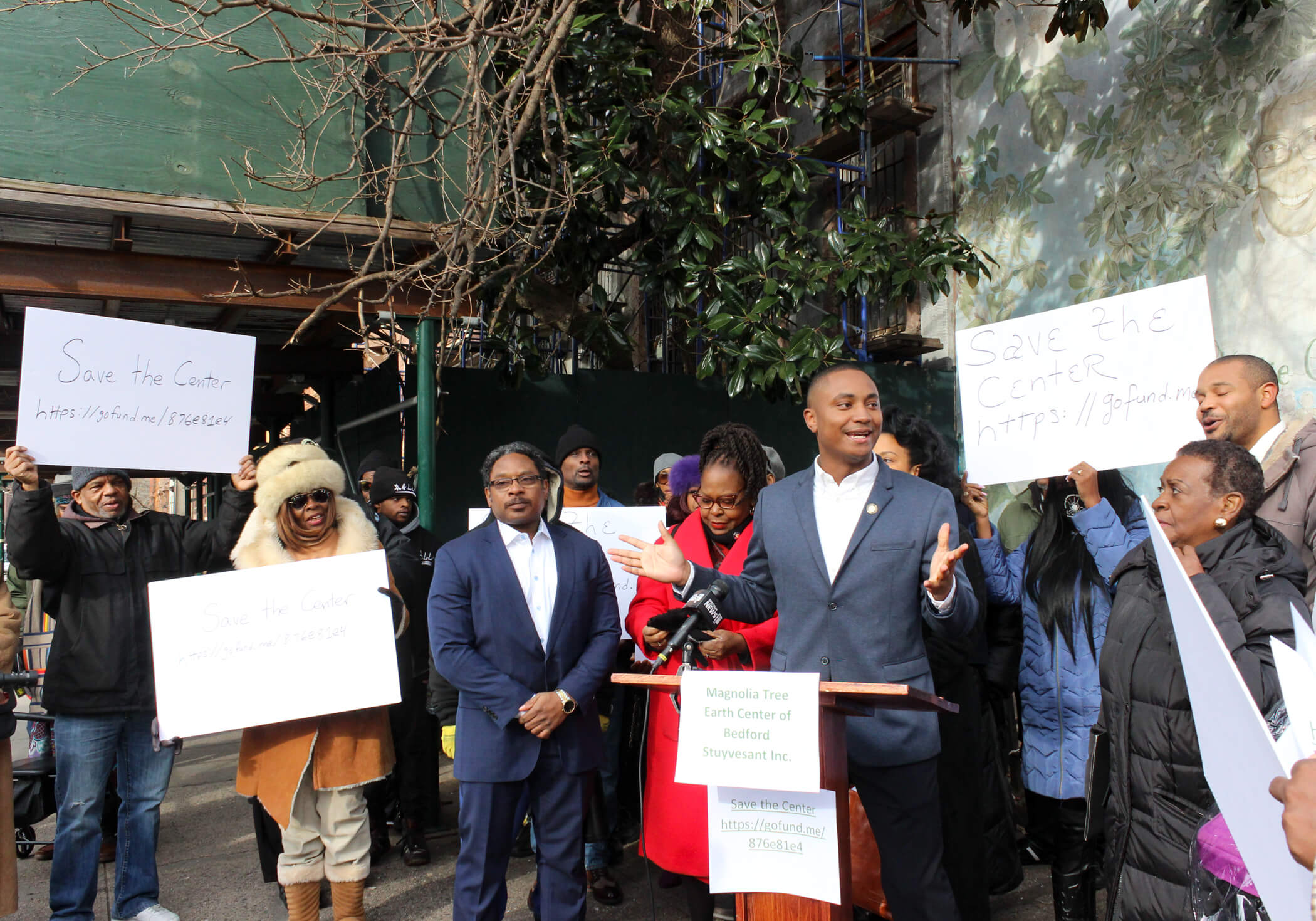
On Thursday morning around 40 people gathered to support the preservation and restoration of Magnolia Tree Earth Center’s home, which spans the three houses at 677, 678, and 679 Lafayette Avenue. Actor Gbenga Akinnagbe, who lives in Bed Stuy, has made a video detailing the history and work of the center, in which he asks the public to donate to the campaign.
Both 678 and 679 Lafayette Avenue are suffering from crumbling facades, and, after a dodgy contractor experience, the nonprofit does not have the funds on hand to restore the buildings, its board director told Brownstoner. The two brownstones are covered in scaffolding and the buildings are racking up fines from the Department of Buildings. Permits issued by Landmarks in 2020 show the scope of work includes roof and facade work on all three houses, plus window and door updates to No. 679. As part of the rally, a Go Fund Me campaign was launched to pay for the repairs.
“We need to raise funds and critical funds, immediate funds, within the next 60 days,” NYC Commissioner of Cultural Affairs and former City Council Member Laurie Cumbo told the crowd Thursday. “This is a central hub in central Brooklyn and it’s critical that we make sure that we save it.”
The Magnolia Tree Earth Center is much more than just a physical landmark in the neighborhood, Cumbo said, it is an institution that is “critical to the community,” especially Bed Stuy’s Black community, as a place where afterschool programs, art and cultural programming, community events, nonprofit organizing, and more are held.
“In a historically Black community facing upheaval from gentrification, cost of living increases, and other threats, MTEC represents a Black -founded, -owned, and -led institution whose mission is rooted in social justice, self-determination, and land ownership by and for the Bed Stuy community,” according to the GoFundMe campaign.
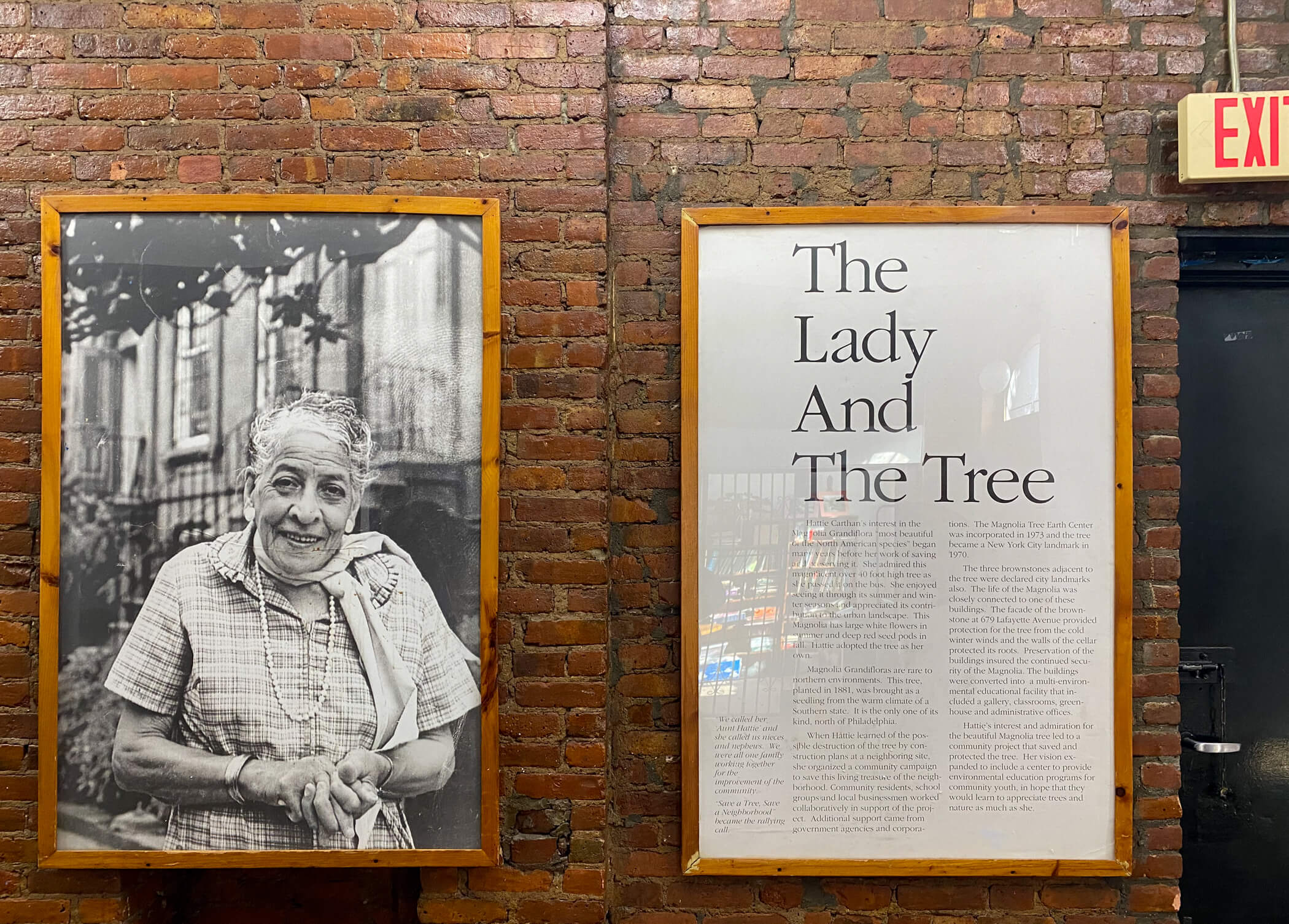
The center was brought to life by Carthan, affectionately known as “tree lady,” through her environmental advocacy, which began around 1964. That was the year Carthan helped to form the Tompkins and Throop Block Association, known as the T & T, which catalyzed the city’s matching tree program that aided in the planting of around 1,500 trees.
“I remember that when I first suggested that we buy trees, I almost got thrown out of the block association,” she told the New York Times in 1975. “They said, ‘Oh, trees make leaves and you have to sweep.’”
The tree Carthan became the most well-known for is the Magnolia Grandiflora, or “laurel magnolia,” located a few blocks south from where she used to live. Carthan, who had moved to Vernon Avenue from Virginia, told the New York Times in 1977 “for years I had passed it riding on the Lafayette Avenue bus going shopping, and I didn’t even know it was magnolia. I adopted it then and said it was my tree.”
In 1968, she found out from someone in City Planning that the evergreen tree, common in the south and known for its large white lemon-scented blossoms, was to be felled to make way for a new apartment complex’s required car parking, and the four surrounding row houses that protected it were also to be demolished.
Carthan sprung to action and formed the Magnolia Tree Committee to save the tree. In order to do that, the architect of the new development said a wall could be constructed where the houses stood to protect the tree, but it would cost $20,000. “Well, nobody had $20,000—this is not an affluent community,” Carthan told the New York Times at the time. “We did think if we could raise $5,000 or so, at the same time educating our children to the value of that tree and all trees, perhaps somebody would help us with the rest of the money.”
And they did: The group managed to raise $7,000 selling magnolia leaves for a raffle, and the New York Horticultural Society offered matching funds. Carthan also managed to secure a Landmarks Preservation Commission hearing on protecting the tree as a living landmark — and was again successful.
In its 1970 designation report, the commission wrote: “The Commission further finds that, among its important qualities, the Magnolia Grandiflora is a natural phenomenon which by rare good fortune has prospered and grown to great size in the heart of the City and far from its usual habitat, that it is situated tor alI to see and that, when provided with the protective devices specified herein, it gives every reasonable promise of surviving as a joy to nature lovers for years to come.”
The commission credited Carthan with almost single-handedly saving the tree. Then, seven years later, the three brownstones that protected the tree were also landmarked by LPC. (A fourth house was demolished due to its condition and a wall was built in its place to protect the tree.) The development had shrunk in scope, and there was no longer such demand from the city for the land the buildings were on.
According to The New York Times, the Housing and Development Administration, which owned the houses, planned to sell them to Magnolia Tree for $20,000, but dropped the price to $1,200 after negotiation. Antenor Adams, who owned three McDonald’s restaurant franchises in Brooklyn, bought the houses for the nonprofit so it could start its community center, the newspaper reported. Those three homes became Magnolia Tree Earth Center.
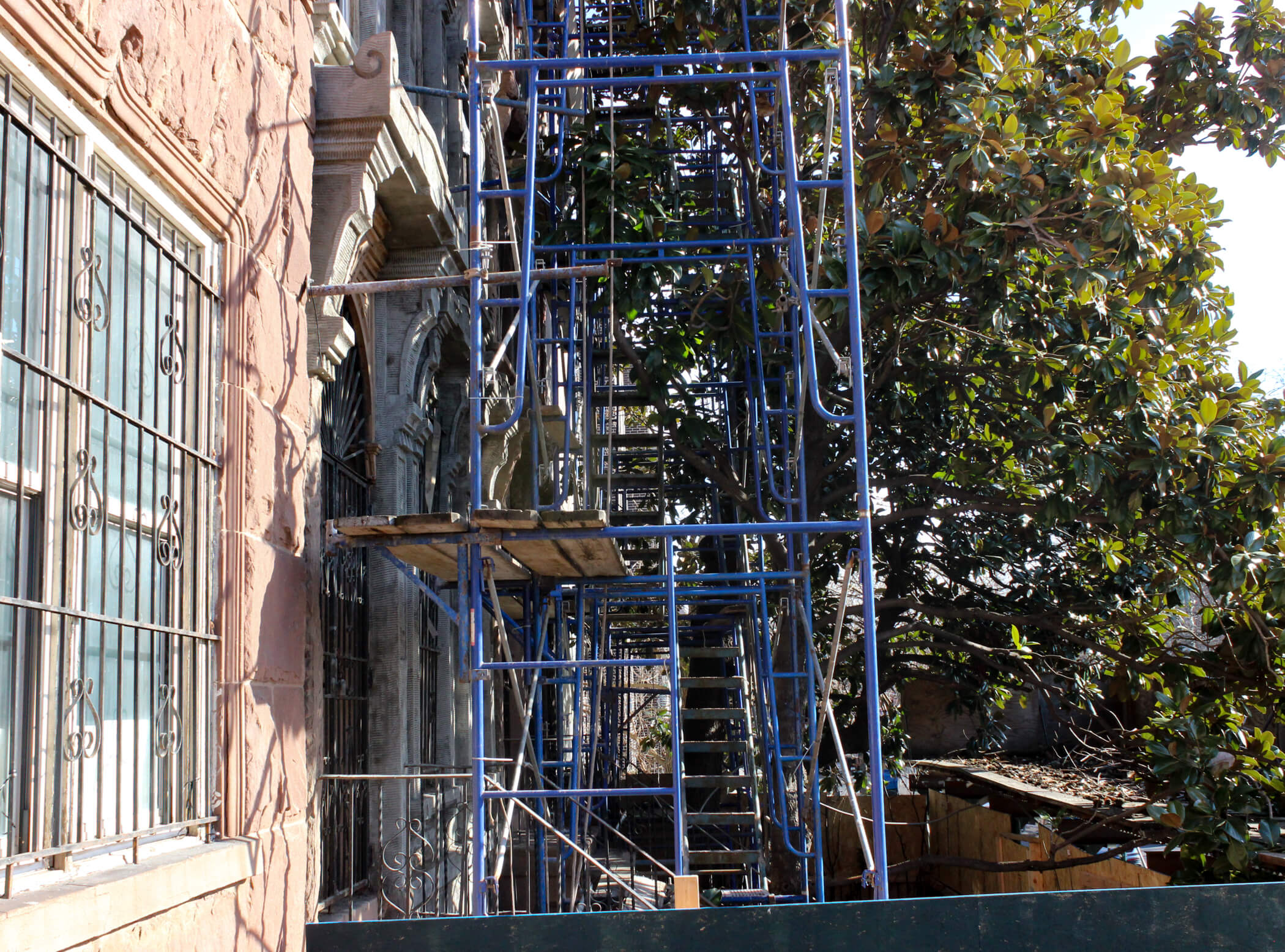
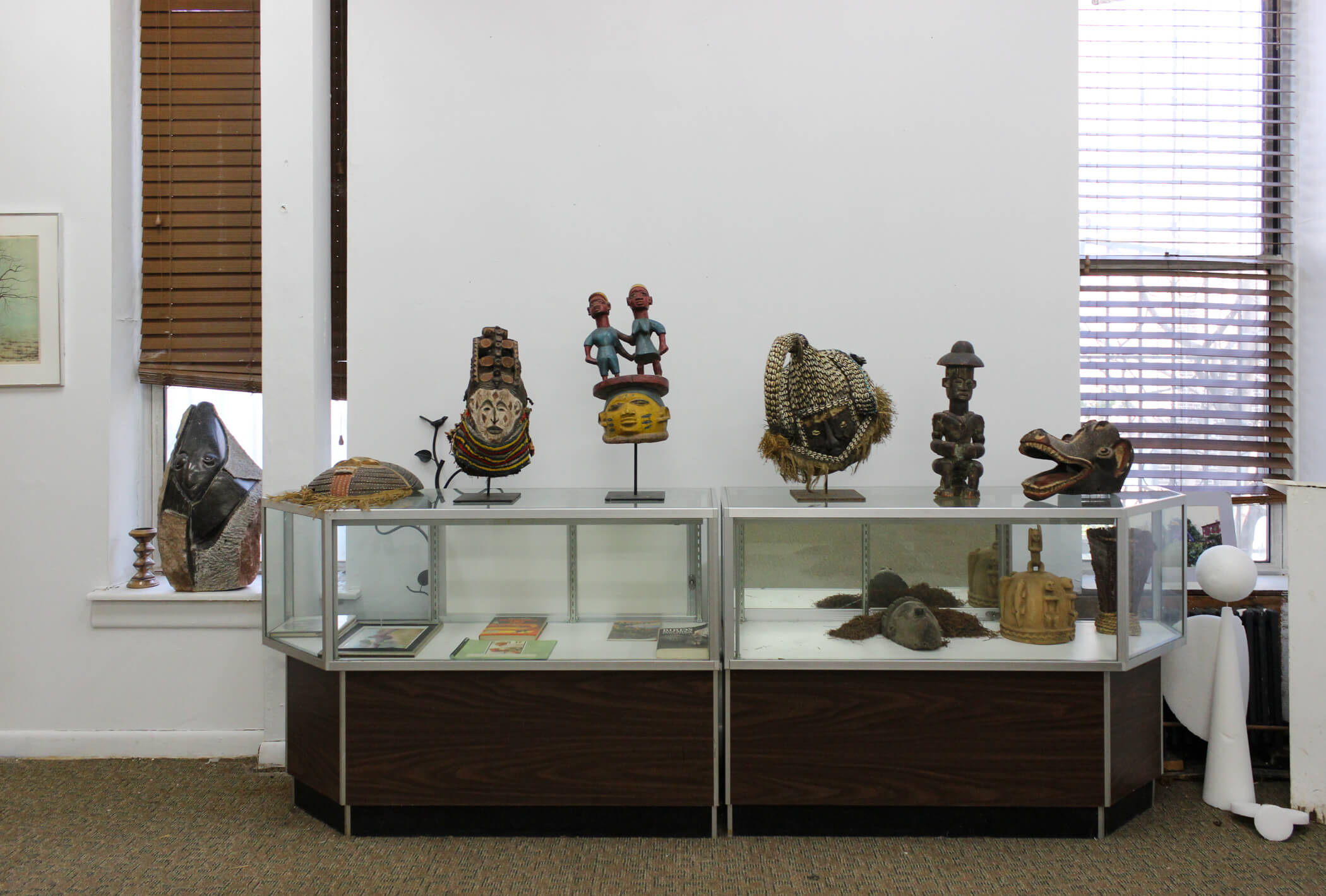
Today, the organization is run by a board with president Wayne Devonish. Devonish told the crowd on Thursday he was confident with the community’s support that Carthan’s legacy could be “elevated and put in its proper place.”
The organization is asking the community for $350,000 to fund the facade renovations. “We have a heavy lift, but I know we can do it. We are New Yorkers, we are resilient. We don’t want to see another institution disappear,” Devonish said. “Because of this showing right here, I know we’re on the right track.”
Local Council Member Chi Ossé said Carthan, “one of the first environmentalists before people even knew the word environmentalist,” had fought extremely hard to protect the magnolia tree and the houses and had built a “cultural institution that both represents the past and the future of our community.”
“This landmark also represents the future, not only the future of our community, not only the future of Brooklyn, but the future of our planet, as we see climate change affecting the climate of our city, there’s no snow in the month of January and early February,” he said. “We need to preserve landmarks like the one that we’re standing in front of here today.”
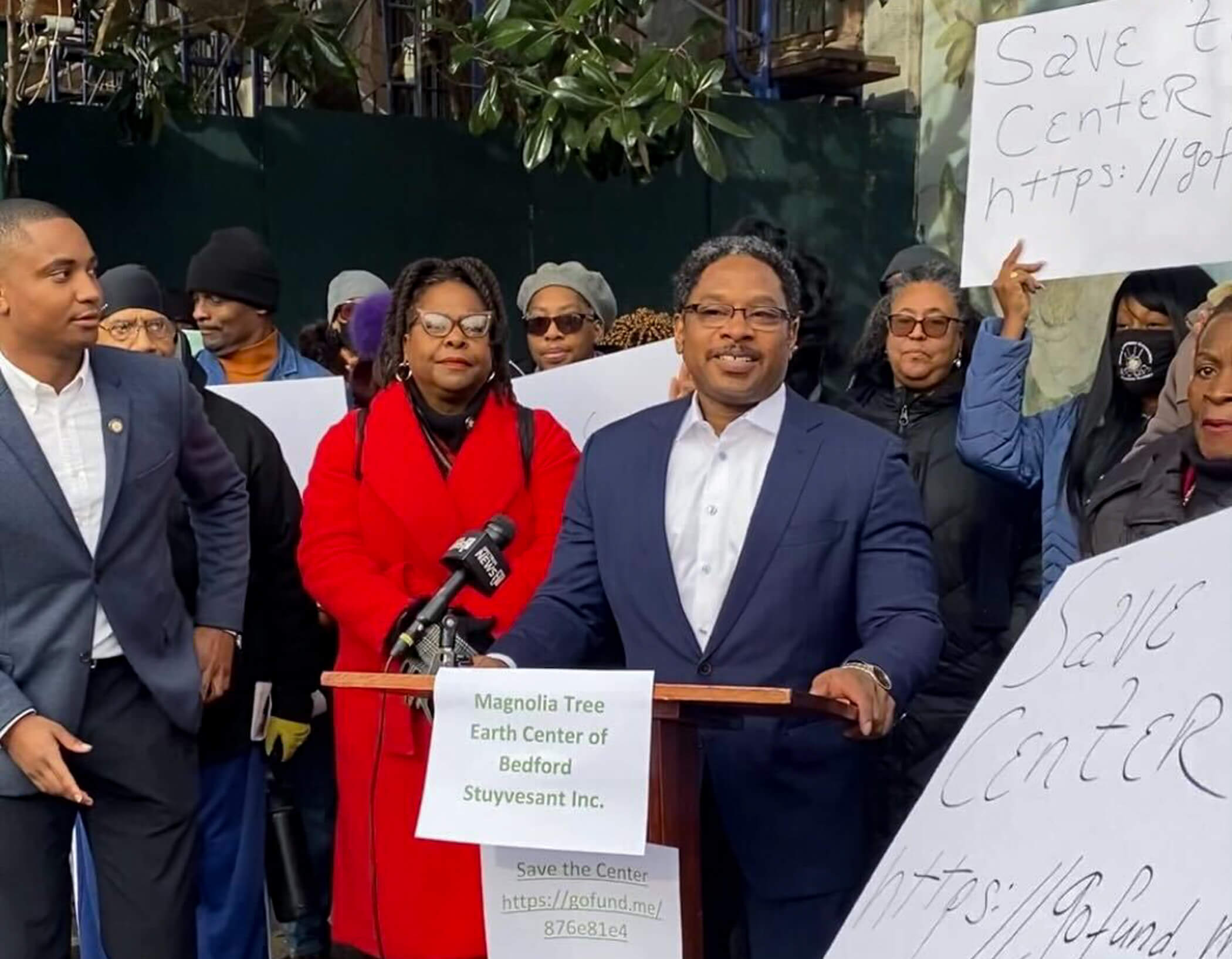
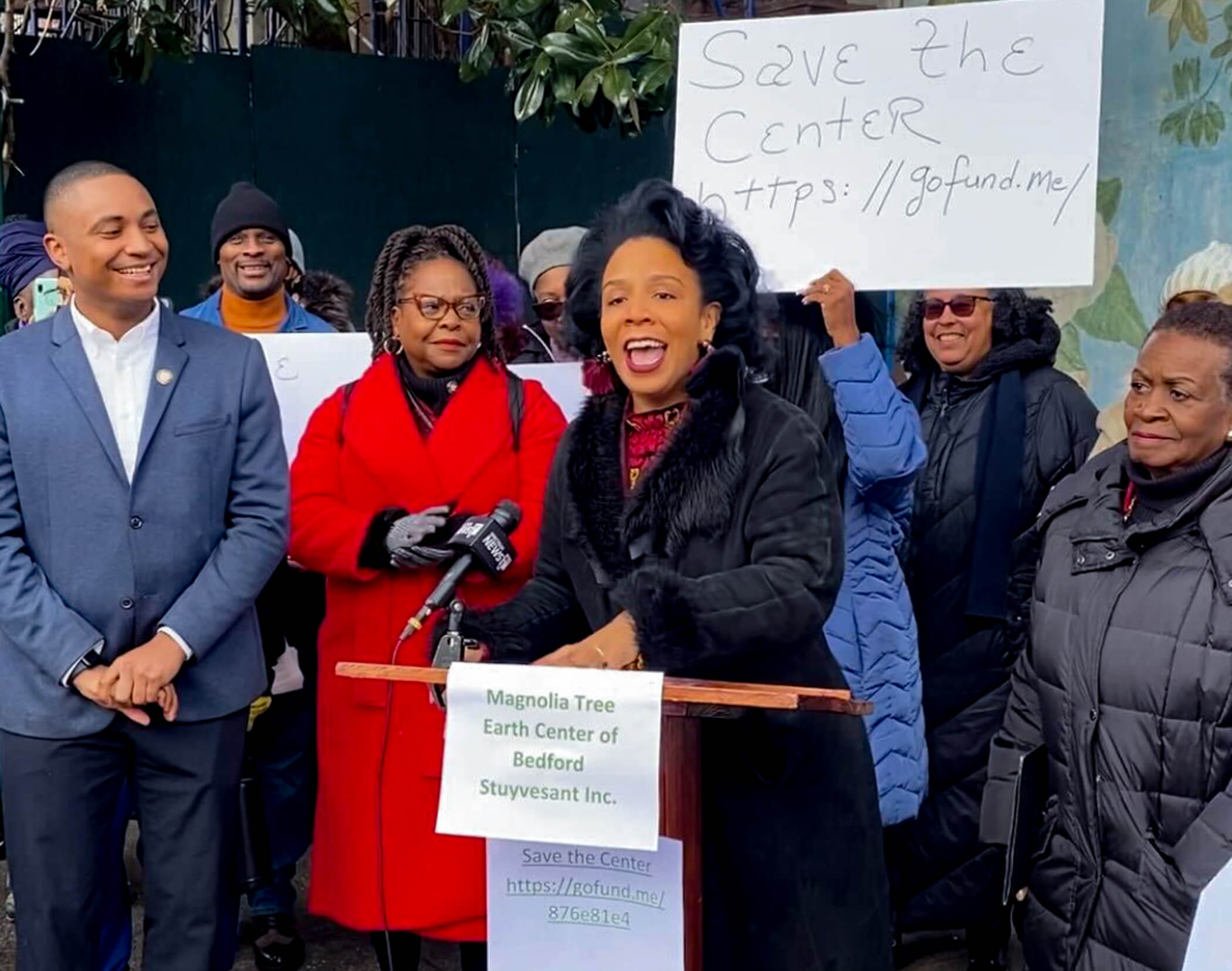
All of the speakers at the rally, which included Ossé, Cumbo, State Senator Jabari Brisport, and State Assembly Member Stefani Zinerman, noted how the center is part of Bed Stuy’s Black history and legacy and needs to endure as an institution for future generations.
Cumbo called on groups and individuals in the neighborhood to donate as much as they can to the center, and said it is time some of the big-name stars from the neighborhood turn up in support of locals.
“Everybody’s out here rapping about Bed Stuy, singing about Bed Stuy, dancing about Bed Stuy, saying they from Bed Stuy; if you are an athlete, if you are a musician and entertainer, hedge fund owner, whatever it is, we need you to invest in our communities, the same people can’t keep saving the community all the time,” she said.
“We need you to give up that funding and to become a part of the community. We can’t continue to keep finding you, know where you come from and know what’s important and you need to invest in it.”
The fundraising campaign has so far raised $9,340.
[Photos by Anna Bradley-Smith]
Related Stories
- How Bed Stuy Became Home to Brooklyn’s Only Living Landmark
- Preservationists “Overjoyed” as Landmarks Approves Bedford Historic District
- Learn About the Green Legacy of Bed Stuy’s Hattie Carthan With the Brooklyn Collection
Email tips@brownstoner.com with further comments, questions or tips. Follow Brownstoner on Twitter and Instagram, and like us on Facebook.

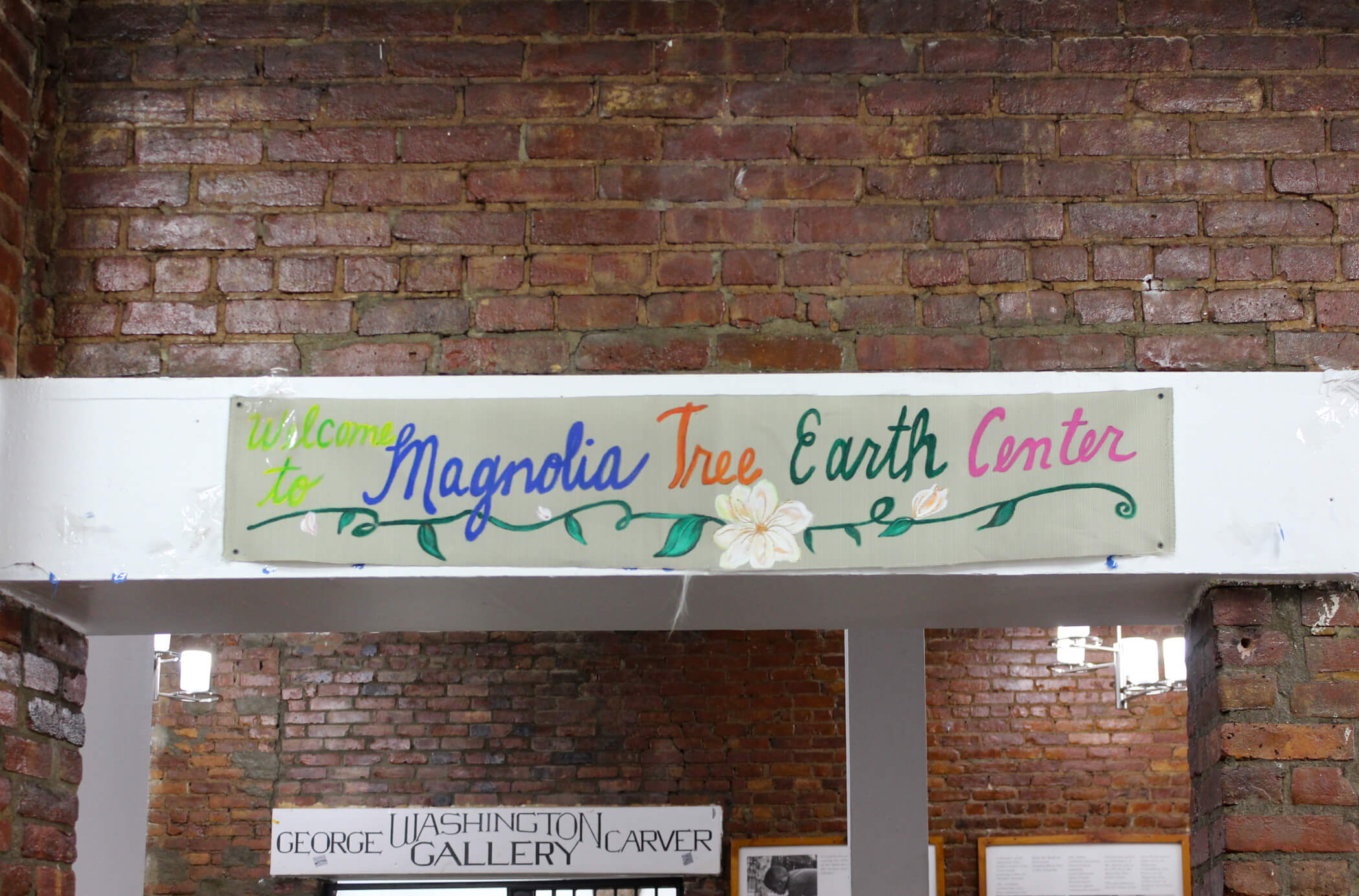
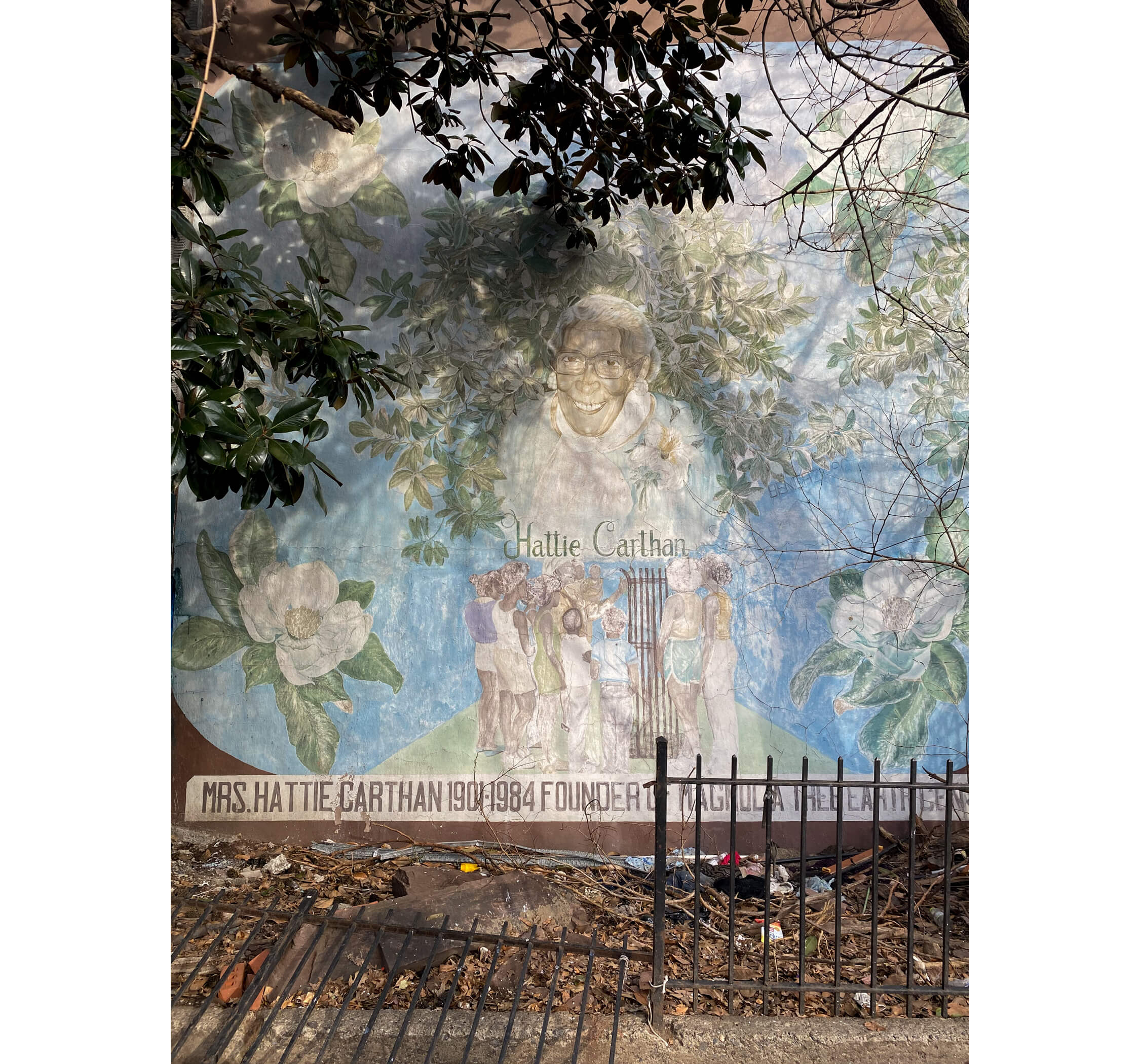








What's Your Take? Leave a Comment